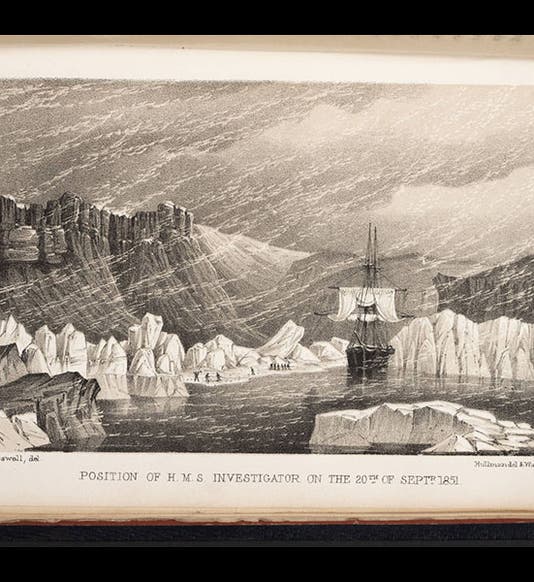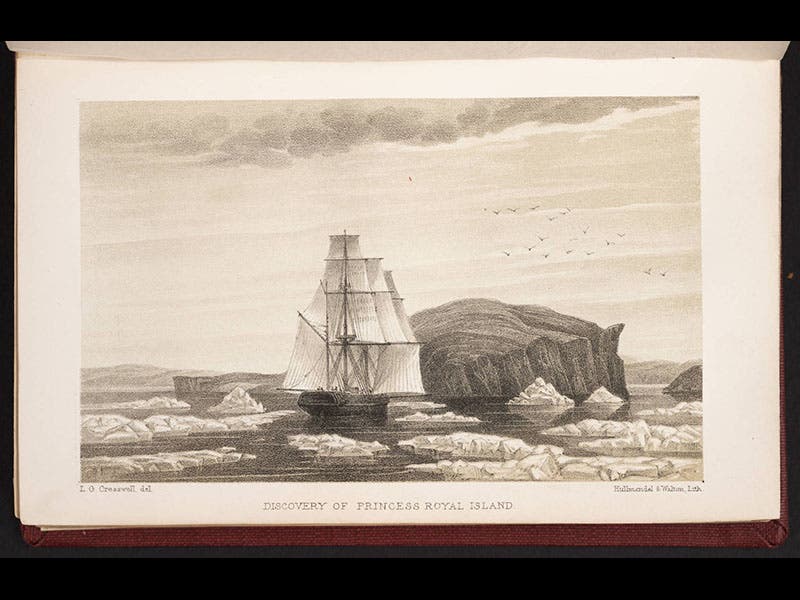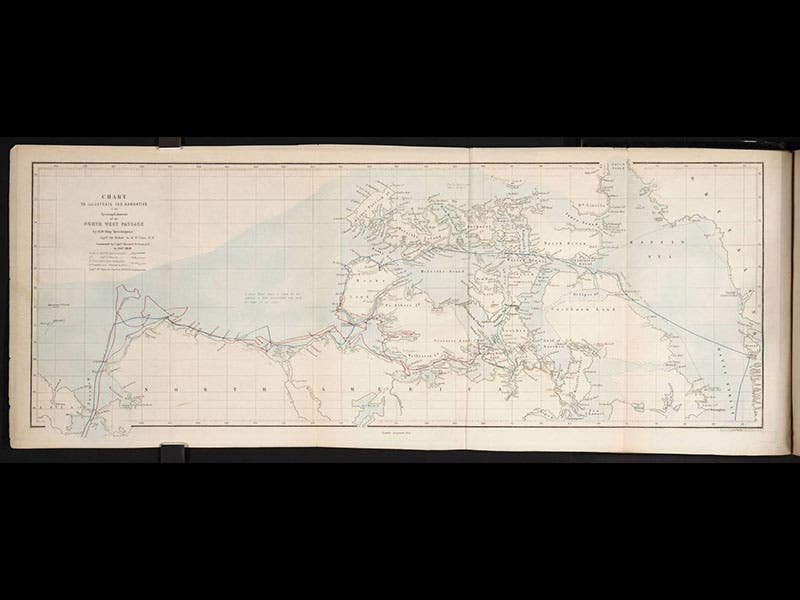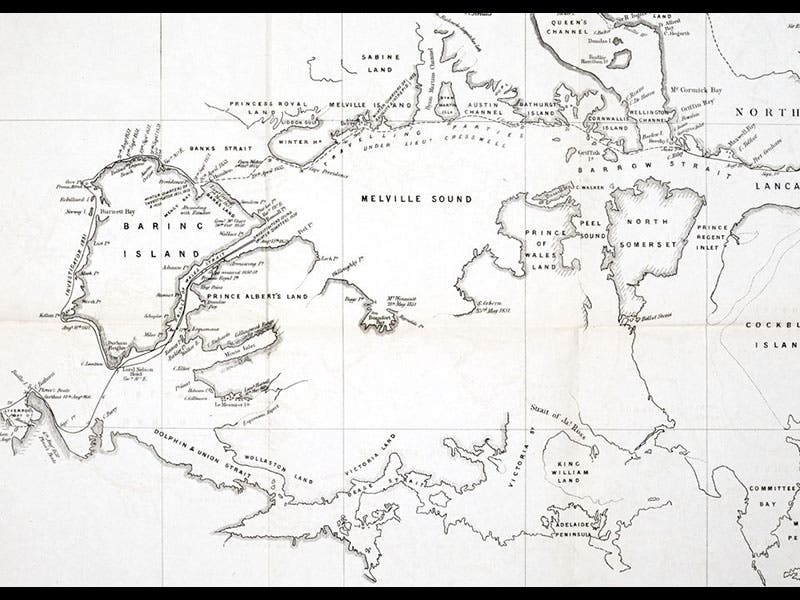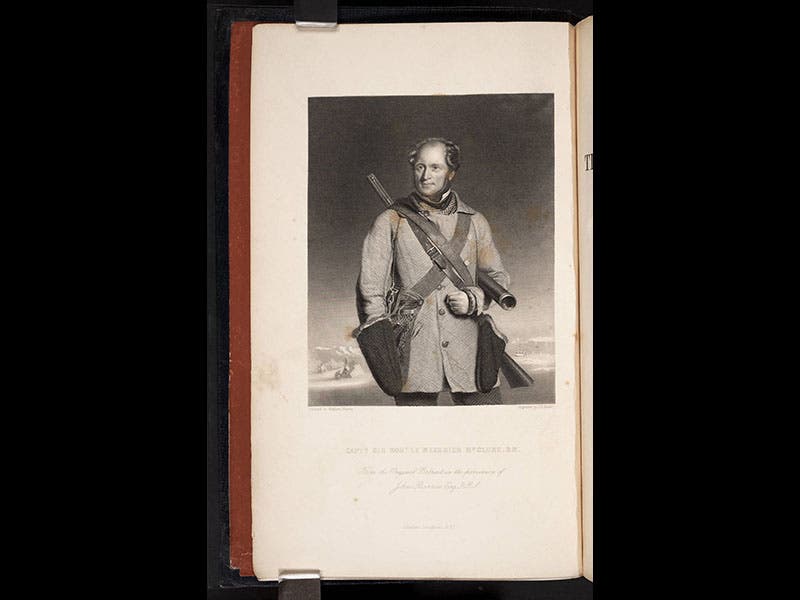Scientist of the Day - Robert McClure
Robert John Le Mesurier McClure, an English naval officer and explorer, was born Jan. 28, 1807. In 1850, McClure set off as captain of HMS Investigator, with a companion ship, the Enterprise, to try to enter the Northwest Passage from the west. Their mission was to see if by chance the missing Franklin expedition had made it through the Arctic archipelago and was stranded somewhere between there and Alaska. The Investigator and the Enterprise split apart, and the Investigator got as far as Banks Island , from where they could see across the strait to Melville Island, which had been reached by previous explorers from the east. But the Investigator never crossed that strait; the ship was frozen in at Mercy Bay and never did thaw out. Two years later, in 1853, the Investigator was reached by a sledge party from Melville Island, where another search flotilla was anchored, and McClure and his men were rescued and eventually made it back to England. Since McClure had in effect navigated the complete Northwest Passage, even though part of it was by sledge, he was awarded a £10,000 prize that had been offered by the Admiralty for the first man to complete a Northwest Passage. His lieutentant, Samuel Cresswell, was with him every step of the way; why he did not share in the award, we do not know.
Nearly every commander of a voyage to the Arctic wrote and published a narrative, but for some reason, McClure did not. The Discovery of the North-west Passage by H.M.S. Investigator was written by Sherard Osborn, who was not even on the Investigator, with illustrations by Lt. Cresswell, who was. It was first published in 1856; we have that edition in the Library, along with an 1859 edition that includes a beautiful map and a portrait of McClure. The images above are taken from these two works, and we displayed them both in our 2009 exhibition, Ice: A Victorian Romance.
Of the two maps shown, one depicts the complete Northwest Passage of McClure; the other is a detail of the Melville Bay area; if one looks at the top of Baring Island (a variant name for Banks Island), the label “Mercy Bay” may be seen, where the Investigator came to her frozen stop, and where the solid line of the ship’s journey turns into the dotted line of the rescuing sledges.
Dr. William B. Ashworth, Jr., Consultant for the History of Science, Linda Hall Library and Associate Professor, Department of History, University of Missouri-Kansas City. Comments or corrections are welcome; please direct to ashworthw@umkc.edu.

